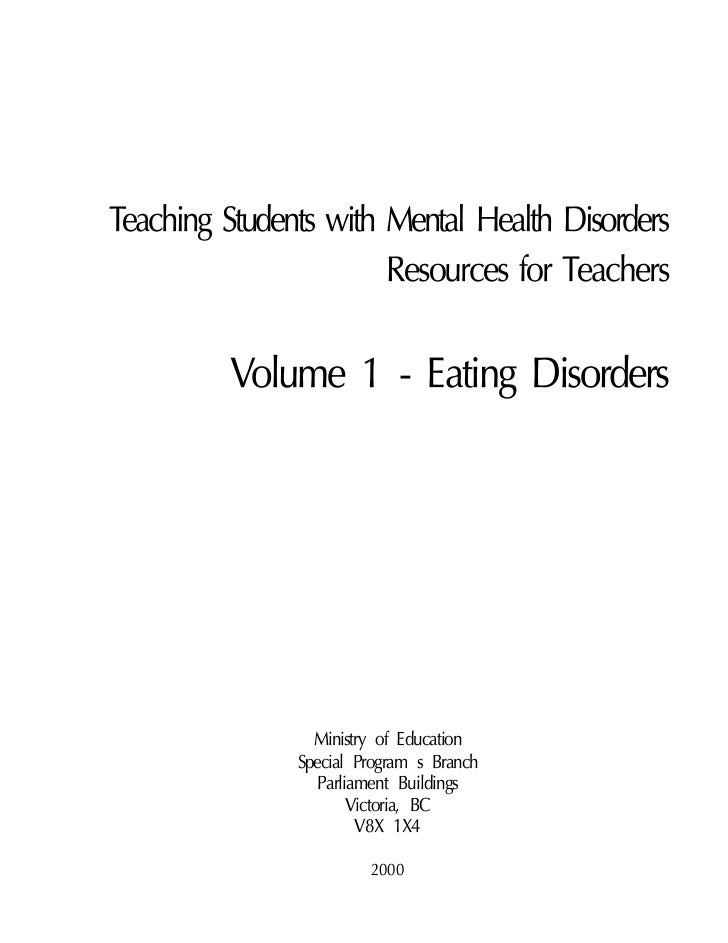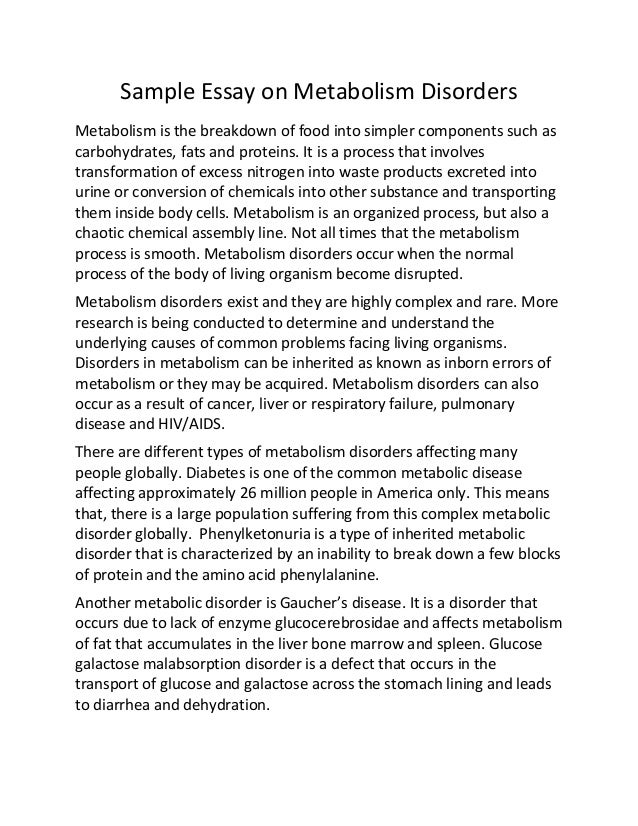
Recent Posts
Essay On Eating Disorders: Kinds, Symptoms, Treatment 1) Psychogenic vomiting is chronic vomiting that occurs when happen emotional and other mental disorders. 2) Orthorexia is an obsessive desire to eat only healthy food. 3) Selective eating disorder is a refusal to eat certain food, thus person Physical consequences of Eating Disorders depend on the type of eating disorder that the person has. Anorexia nervosa can lead to a slow heart rate and low blood pressure, putting the sufferer at risk for heart failure and permanent heart damage. Malnutrition can lead to osteoporosis and dry, brittle bones · Eating disorders tend to be the symptom of larger psychological distress, and they are often accompanied by severe depression, self-mutilation (as in "cutting" practices), and other addictions. hile many teenage girls eventually recover from their eating disorders to live a healthy lifestyle, many either continue their disordered eating habits

Risk Factors
· Examples include anorexia nervosa, bulimia nervosa, pica, rumination disorder, binge eating disorder, and restrictive or avoidant food intake eating disorder. Each of these disorders has distinct signs. However, they all have common signs that include obsession with food and body image, mood swings, food rituals, weight fluctuations, and · Eating disorders tend to be the symptom of larger psychological distress, and they are often accompanied by severe depression, self-mutilation (as in "cutting" practices), and other addictions. hile many teenage girls eventually recover from their eating disorders to live a healthy lifestyle, many either continue their disordered eating habits Eating disorders have been termed the disease of the ’s. An eating disorder is defined as “a dangerous and intense striving to become thin (Macionis ). Even though it has been found that “95% of people who suffer anorexia or bulimia are woman, mostly from white, relatively affluent families” (Macionis ), “the pre-occupation and obsession with food are not limited to Estimated Reading Time: 9 mins

Top 10 Similar Topics
· Examples include anorexia nervosa, bulimia nervosa, pica, rumination disorder, binge eating disorder, and restrictive or avoidant food intake eating disorder. Each of these disorders has distinct signs. However, they all have common signs that include obsession with food and body image, mood swings, food rituals, weight fluctuations, and Eating disorders can be a psychological factor such as, perfectionism, obsessive compulsive disorder, low self-esteem, and a negative outlook on things. Specific personality traits can be interchangeable between each eating disorder, therefore it can be difficult to know the differences between the psychological causes from the effects · Eating Disorders: A Psychological Perspective. Historically, eating disorders such as Anorexia Nervosa and Bulimia Nervosa were misunderstood to be a consequence of an individuals’ desire to be thin. However, it is now known that they are in fact distinct, self-maintaining psychological disorders with multiple causes
Categories
Eating disorders can be a psychological factor such as, perfectionism, obsessive compulsive disorder, low self-esteem, and a negative outlook on things. Specific personality traits can be interchangeable between each eating disorder, therefore it can be difficult to know the differences between the psychological causes from the effects · Eating disorders tend to be the symptom of larger psychological distress, and they are often accompanied by severe depression, self-mutilation (as in "cutting" practices), and other addictions. hile many teenage girls eventually recover from their eating disorders to live a healthy lifestyle, many either continue their disordered eating habits Eating disorders have been termed the disease of the ’s. An eating disorder is defined as “a dangerous and intense striving to become thin (Macionis ). Even though it has been found that “95% of people who suffer anorexia or bulimia are woman, mostly from white, relatively affluent families” (Macionis ), “the pre-occupation and obsession with food are not limited to Estimated Reading Time: 9 mins
Eating Disorders
Eating disorders have been termed the disease of the ’s. An eating disorder is defined as “a dangerous and intense striving to become thin (Macionis ). Even though it has been found that “95% of people who suffer anorexia or bulimia are woman, mostly from white, relatively affluent families” (Macionis ), “the pre-occupation and obsession with food are not limited to Estimated Reading Time: 9 mins Eating disorders can be a psychological factor such as, perfectionism, obsessive compulsive disorder, low self-esteem, and a negative outlook on things. Specific personality traits can be interchangeable between each eating disorder, therefore it can be difficult to know the differences between the psychological causes from the effects · Examples include anorexia nervosa, bulimia nervosa, pica, rumination disorder, binge eating disorder, and restrictive or avoidant food intake eating disorder. Each of these disorders has distinct signs. However, they all have common signs that include obsession with food and body image, mood swings, food rituals, weight fluctuations, and
No comments:
Post a Comment